Infectious Disease Modelling
Infectious disease modeling is a powerful tool used by epidemiologists and public health experts to understand the dynamics of disease transmission and inform effective intervention strategies. By simulating the spread of pathogens within populations, infectious disease models can predict the course of outbreaks, assess the impact of various control measures, and guide resource allocation for disease prevention and control. These models incorporate factors such as population demographics, contact patterns, and pathogen characteristics to simulate disease transmission dynamics accurately. Mathematical models, including compartmental models like the Susceptible-Infectious-Recovered (SIR) model and agent-based models, enable researchers to explore different scenarios and evaluate the effectiveness of interventions such as vaccination campaigns, social distancing measures, and travel restrictions. Infectious disease modeling plays a crucial role in pandemic preparedness, allowing policymakers to make informed decisions and mitigate the spread of infectious diseases, ultimately saving lives and reducing the burden on healthcare systems.

Francis J Castellino
University of Notre Dame, United States
Ranjan Ramasamy
ID-FISH Technology, United States
Saurabh Chattopadhyay
University of Kentucky College of Medicine, United States
Rico Leonardo Lizbinski
Northern Light Health, United States
Sasha Leibholz
New York Presbyterian Columbia/Cornell, United States
Lauren Gruffi
New York Presbyterian Columbia/Cornell, United States



Title : Pathogen-derived noncanonical epitopes: Are they valuable targets for novel vaccinations and shall we be concerned about autoimmune responses?
Michele Mishto, Francis Crick Institute, United Kingdom
Title : Bioterrorism through the ages: Historical perspective, emerging threats, and medical countermeasures
Claudia Ferreira, Sorbonne University, France
Title : Changing population immunity to COVID-19 in the context of infection, vaccination, and emerging SARS-CoV-2 variants
Ranjan Ramasamy, ID-FISH Technology, United States
Title : Extensively drug-resistant bacterial infections: Confronting a global crisis with urgent solutions in prevention, surveillance, and treatment
Yazdan Mirzanejad, University of British Columbia, Canada
Title : Measles vaccination coverage indicators in 2023 and advance towards measles elimination and eradication by 2030
Pedro Plans Rubio, College of Physicians of Barcelona, Spain
Title : Severe influenza and other related respiratory infection cases during Omicron era in Japan
Masafumi Seki, Saitama Medical University International Medical Center, Japan